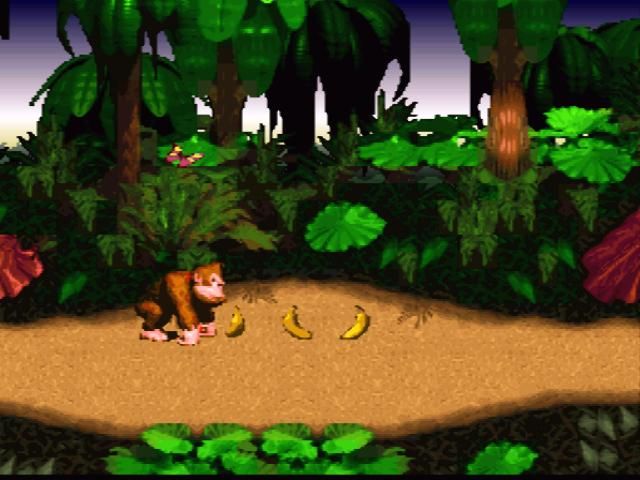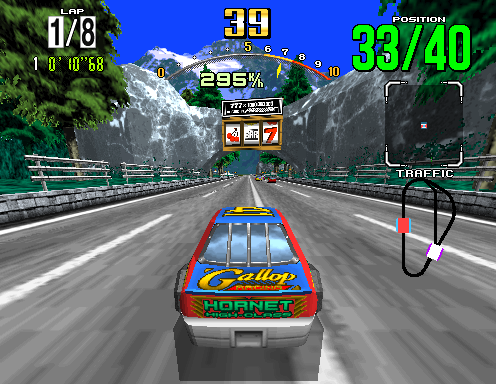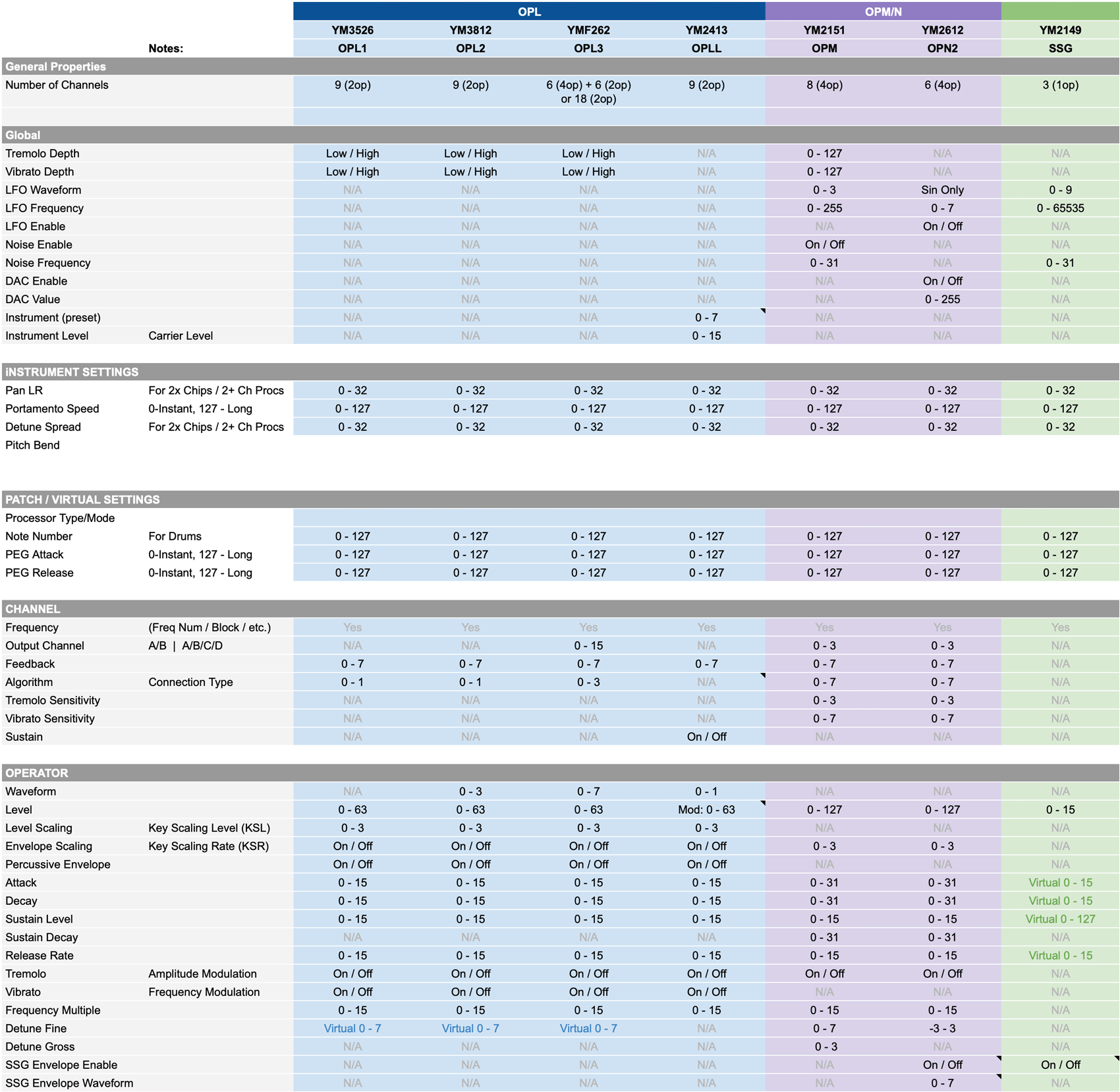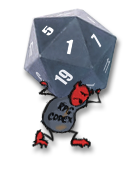Melcar
Arcane
The snes had some pretty awesome game tunes.
Pac-Land was another one that did platforming with it going left-to-right in colorful levels before Super Mario Bros.It's unreal isn't it?Nintendards cope that their systems were ever considered "high definition" is fascinating.Funnily enough, there are some counter memes pointing out very similar to other similar claims...So in recent weeks, I've started seeing this a lot on Facebook...
What tendies think peak graphics looked like in 1994:

Actual peak graphics in 1994:


Amiga in the 80's, PC, Sega, PS1, 3DO (basically anyone) had games with higher definition graphics and sound.
It is same kind of blind game-history revisionism that disregards all platformers and 80s arcades that were not Nintendoslop in retrospectives and all-time lists.
Counter points for those memes above from a lot of people were often people stating "yeah...but those none-Nintendo games were in the arcade/on PC!! That doesn't count!! They were technically more powerful/expensive!!" As if that matters. They literally change all the goal posts to suit their arguments all the time.
It's a weird. These groups are essentially split into every-gamers, who played all systems and appreciate them for their own traits, and Nintendrones who rabidly claim Nintendo invented the wheel constantly lol. This Con Lafferty faggot make some hilarious claims...I always find it weird that Nintendo fans are the loudest. I get the nostalgia factor, but kids also had playstations and whatnot. Where are the Sony and Sega fanboys? Are nintendo fans manchildren that never grew up and have nothing else to do than be on the internet?

So in recent weeks, I've started seeing this a lot on Facebook...
The snes had some pretty awesome game tunes.
Facebook is funny AF, some of the warped shit you see (like what I'm posting here) is hilarious.So in recent weeks, I've started seeing this a lot on Facebook...
Donkey Kong Country was one of the best-looking games of 1994. Ocarina of Time looked like absolute ass though, not remotely the best looking 3D game at the time, let alone pre-rendered or pixel art.
Why you on facebook? Rhetorical question, there is no legitimate justification you can give.
Also want to say I appreciate this thread, because utter ignorance of gaming history and the warping of it is everywhere, including here at times.
The snes had some pretty awesome game tunes.
Bro the 90s was peak music in gaming. SNES and every other machine. PC not so much in the first half of the decade (MIDI, though some were cool) but towards the end had caught up.
Nonsense, there is absolutely banging PC music in that time frame. FM sound ftw.So in recent weeks, I've started seeing this a lot on Facebook...
Donkey Kong Country was one of the best-looking games of 1994. Ocarina of Time looked like absolute ass though, not remotely the best looking 3D game at the time, let alone pre-rendered or pixel art.
Why you on facebook? Rhetorical question, there is no legitimate justification you can give.
Also want to say I appreciate this thread, because utter ignorance of gaming history and the warping of it is everywhere, including here at times.
The snes had some pretty awesome game tunes.
Bro the 90s was peak music in gaming. SNES and every other machine. PC not so much in the first half of the decade (MIDI, though some were cool) but towards the end had caught up.
Mind you, I'm just a casual music enjoyer. However, there was absolutely no technical quality difference between PCs and consoles. Are you sure you aren't thinking of low cost sound chips used in sound cards for IBM-compatibles?There was. Plenty banging tunes and an important part of 90s musical glory. I didn't say otherwise. But overall there was a quality difference, technical and otherwise.
MIDI and CD-ROM are two different audio formats:
- MIDI (Musical Instrument Digital Interface): It is a synthesized audio format that is commonly used for electronic music. MIDI files are stored in a digital format and are played by MIDI synthesizers or software that can render MIDI files.
- CD-ROM (Compact Disc Read-Only Memory): CD-ROMs contain real audio data that is stored in a physical format. CD-ROMs can play MP3, WAV, and other audio formats. The sound quality of CD-ROM audio is richer because it is true recorded sound.
MIDI is a protocol, not sure why you are bringing that in when it's about sound chips and types such as FM. Besides, the FM Towns had CD-DA/redbook audio since the beginning aka 1989.As I said in another thread, as one example PSX had CD quality audio as the standard for every game on it 1994 onward. PC was majority MIDI until a little bit until later. For PC games CD quality was called "redbook audio" which was sometimes offered, but unfortunately it was not even close to being the standard. And in a lot of cases the MIDI version was better anyway (failure of the composer in that case).
MIDI and CD-ROM are two different audio formats:
- MIDI (Musical Instrument Digital Interface): It is a synthesized audio format that is commonly used for electronic music. MIDI files are stored in a digital format and are played by MIDI synthesizers or software that can render MIDI files.
- CD-ROM (Compact Disc Read-Only Memory): CD-ROMs contain real audio data that is stored in a physical format. CD-ROMs can play MP3, WAV, and other audio formats. The sound quality of CD-ROM audio is richer because it is true recorded sound.
I always find it weird that Nintendo fans are the loudest. I get the nostalgia factor, but kids also had playstations and whatnot. Where are the Sony and Sega fanboys? Are nintendo fans manchildren that never grew up and have nothing else to do than be on the internet?
The Chris Chan types come out of the Nintendo fandom. Overly and/or unhealthily obsessive types, and thus the most vocal and insistent about the values of the thing they are obsessed with, often childish things and/or things of their youth. Say what you will about normie tastes/standards, and they can be astoundingly ignorant at times, but they don't insist that God of War invented 3D melee combat or some such bullshit.I think that the people who buy playstations are just mostly normies. At least that's what it was like when I was a kid - you had a playstation so you could play the obligatory FIFA game with your friend when he comes over (or rather before he leaves). Almost like a modern version of arm wrestling. I do find it strange that people gush about games I've never heard about but then nobody talks about something like Gran Turismo, you know, the best selling game on the original playstation? But again, just like sportshit, GT is a very normie game that appeals to roughly half the human population (the men), being about cars. People like that don't care what others think about their consoles/games and certainly won't go online to participate in console warring.
Soul vs soulessFunnily enough, there are some counter memes pointing out very similar to other similar claims...So in recent weeks, I've started seeing this a lot on Facebook...
What tendies think peak graphics looked like in 1994:

Actual peak graphics in 1994:




It's a matter of quantity and standardization. A lot of PC games offered MIDI and that's all you got. There were some PC games with competitive audio but it just wasn't the standard. MIDI was the standard. Some composers still pulled off some great stuff with MIDI nonetheless, like DN3D's 'Aliens, Say Your Prayers!'. However check out the PS1 version's soundtrack of DN3D for comparison and it's mostly a whole other level.
*clears throat* If you will allow me to set a few things straight here before you two continue bickering further.MIDI is a protocol, not sure why you are bringing that in when it's about sound chips and types such as FM. Besides, the FM Towns had CD-DA/redbook audio since the beginning aka 1989.
Regardless of your opinion on the game, it didn't look like it did on the promotional art, which is what some drones are claiming.I don't know what y'all are talking about but Donkey Kong Country was amazing back in '94 and I'm p. sure it still holds up as a decent and fun platformer.
And graphics-wise it was amazing with its pseudo-3D style.


Regardless of your opinion on the game, it didn't look like it did on the promotional art, which is what some drones are claiming.I don't know what y'all are talking about but Donkey Kong Country was amazing back in '94 and I'm p. sure it still holds up as a decent and fun platformer.
And graphics-wise it was amazing with its pseudo-3D style.

As I said in another thread, as one example PSX had CD quality audio as the standard for every game on it 1994 onward.
Why are you putting the OPL3 in the 2-operator category? It could use 4-operator synthesis. It's also very questionable that you say it's better than the OPN2 which could output PCM samples. OPL2 is obviously the worst of the ones you listed. Revisions matter too, especially in the case of OPN2.It's a matter of quantity and standardization. A lot of PC games offered MIDI and that's all you got. There were some PC games with competitive audio but it just wasn't the standard. MIDI was the standard. Some composers still pulled off some great stuff with MIDI nonetheless, like DN3D's 'Aliens, Say Your Prayers!'. However check out the PS1 version's soundtrack of DN3D for comparison and it's mostly a whole other level.*clears throat* If you will allow me to set a few things straight here before you two continue bickering further.MIDI is a protocol, not sure why you are bringing that in when it's about sound chips and types such as FM. Besides, the FM Towns had CD-DA/redbook audio since the beginning aka 1989.
Generally speaking, video games from the mid 80s to the mid 90s made use of whatever sound synthesis hardware was available on the platforms they were executing on. Sound synthesis hardware falls into 3 broad categories:
1. LA (Linear Arithmetic) Synthesis
2. FM (Frequency Modulation) Synthesis
3. PCM (Pulse Code Modulation, a fancy way of saying "sample") Synthesis
Examples of LA synthesizers are the Roland MT-32, or LAPC-I (for IBM PC compatibles, and -N, which could be used with NEC PC-88 and 98) and the Texas Instruments SN76489 (used in the Sega Master System, Game Gear, and SNK Neo Geo Pocket, as well as many 8-bit home computers).
Examples of FM synthesizers include:
In terms of capabilities, OPM > OPN2, OPL3 > OPN2, OPNA > OPN2, while it's hard to place the OPL2 (in the right hands it could sound amazing).
- the OPL (2-op) family of chips such as the Yamaha YM8950 (used in the MSX), the YM3812 (or OPL2 used in the Sound Blaster 1.0, 1.5, 2.0 and Pro cards for IBM PCs, and many arcade boards, notably Toaplan boards), and the YMF262 (OPL3, used by the later Sound Blaster Pro 2 card for IBM PCs and a later sound card for the NEC PC-98),
- the OPN (4-op) family of chips such as the YM2203 (vanilla OPN, used in older NEC PC-88 and PC-98 sound cards), the YM2608 (OPNA, used for some of the best FM synth you will ever hear on the NEC PC-88 and PC-98) and the YM2612 (OPN2, used by the Mega Drive and FM Towns), and finally
- the high end OPM (also 4-op) family of chips, which was basically just the YM2151 (used in the Sharp X68000, and many 80s and early 90s arcade boards, notably Capcom's CPS1)
Finally, examples of PCM synthesizers include the Roland SC-55, SC-88, the Gravis Ultrasound, and the Sony S-SMP (used in the Super Famicom).
("Low cost sound chips" being the OPL line of chips which Nutmeg listed.)Are you sure you aren't thinking of low cost sound chips used in sound cards for IBM-compatibles?
I don't see how your points make much sense, Chrono Trigger and Earthbound are not giants of the SNES because of commercial viability, but because of legacy. Mario 64 was still in that discussion next to FF7 and Ocarina, even back then.With the rise of the global internet we've seen media outlets and youtubers able to fudge history in ways that paint a false narrative of the past. Games like Earthbound and Chrono Trigger were commercial flops made for niche markets and are held up as giants of the SNES library. Nintendo's infamous gaming crash only applied to 1 regional market while the rest of the world was playing the Master System long into the PS2's line span. Commodore, DOS and Amiga history has been all but invalidated where anything not called Doom is unknown and a novelty for Twitch streamers to play when GoG releases it. The best game ever is Mario 64, despite the best game ever arguments on GameFAQS during that generation's life span were always between Zelda : Ocarina of Time and Final Fantasy 7 and Mario 64 getting almost no attention until cross dressing losers started to speedrun it. Banjo Kazooie sold 3 million copies and was upstaged by Croc in magazine coverage and popularity in many regional markets but no one talks about Croc any more while youtube is full of fat fucks getting Jiggy with it.
These are a few examples of revisionism and how the current zeitgeist around retro gaming has been warped through badly researched videos and losers with entire rooms dedicated to NES games because their Dad left one day and never came back. How much of our current history do you think is accurate and what are your personal stories of history now forgotten or warped? Is Nintendo a saviour of the gaymen market or did they fuck up everything so hard they're lucky the industry survived at all? Do you remember the Commodore 64 and played many of the largest game library of any platform ever? Do you just want to say how annoying NES fanboys are and laugh at the constantly flickering sprites other platforms didn't suffer from? Do you want to defend blowing cartridges as a benefit over Atari ones just working? Do you believe ET is the worst game ever because AVGN said so? Lets argue it out and laugh at the manchildren going Bing bing wahoo!
Earthbound are not giants of the SNES because of commercial viability, but because of legacy



The OPL3 could do 18 2-op channels, or in 4-op mode, 6 4-op and 6 2-op channels. OPN2 could do just 6 4-op channels. OPN2 didn't have a PCM channel (not sure why you think it does, maybe it's something I just don't know), just 6 4-op channels. So OPL3 is strictly more capable.Why are you putting the OPL3 in the 2-operator category? It could use 4-operator synthesis. It's also very questionable that you say it's better than the OPN2 which could output PCM samples. OPL2 is obviously the worst of the ones you listed. Revisions matter too, especially in the case of OPN2.
The sixth channel of the OPN2 could be used to output PCM samples.The OPL3 could do 18 2-op channels, or in 4-op mode, 6 4-op and 6 2-op channels. OPN2 could do just 6 4-op channels. OPN2 didn't have a PCM channel (not sure why you think it does, maybe it's something I just don't know), just 6 4-op channels. So OPL3 is strictly more capable.Why are you putting the OPL3 in the 2-operator category? It could use 4-operator synthesis. It's also very questionable that you say it's better than the OPN2 which could output PCM samples. OPL2 is obviously the worst of the ones you listed. Revisions matter too, especially in the case of OPN2.
OPL2 is the least capable of all (just 9 2-op channels), you are correct, but I wouldn't call it "cheap". It's a different kind of sound, for one, and it was a favorite for Toaplan, who are one of my favorite arcade developers. I mean listen to:


You forget that the Mega Drive had a second sound chip, the Sega PSG (SN76496). Similarly, the X68000 had three sound chips and the FM Towns two + the CD-DA audio I mentioned in an earlier post. If we wanted to really get into detail, we would have to analyze all those, their possibilities and how they work together. Of course, what we mentioned so far is generally the "main" sound chip, if you will, the most important part. Now, it gets even way more messy if we bring the PC-88 and PC-98 lines into it.Again, in the right hands. Was the YM3812, SAA1099 combination on the humble Sound Blaster more powerful than the OPN2 on the Mega Drive? To be honest, I don't even know if both could be used simultaneously, and it'd be difficult to say anyway. Certainly more Mega Drive developers knew what they were doing.
Anyway, it comes down to what I wrote...that PCs weren't in any way inferior to consoles when it came to music, "technical or otherwise". The worst of what PCs had to offer definitely shouldn't be used as a comparison. Like I said:
("Low cost sound chips" being the OPL line of chips which Nutmeg listed.)Are you sure you aren't thinking of low cost sound chips used in sound cards for IBM-compatibles?







